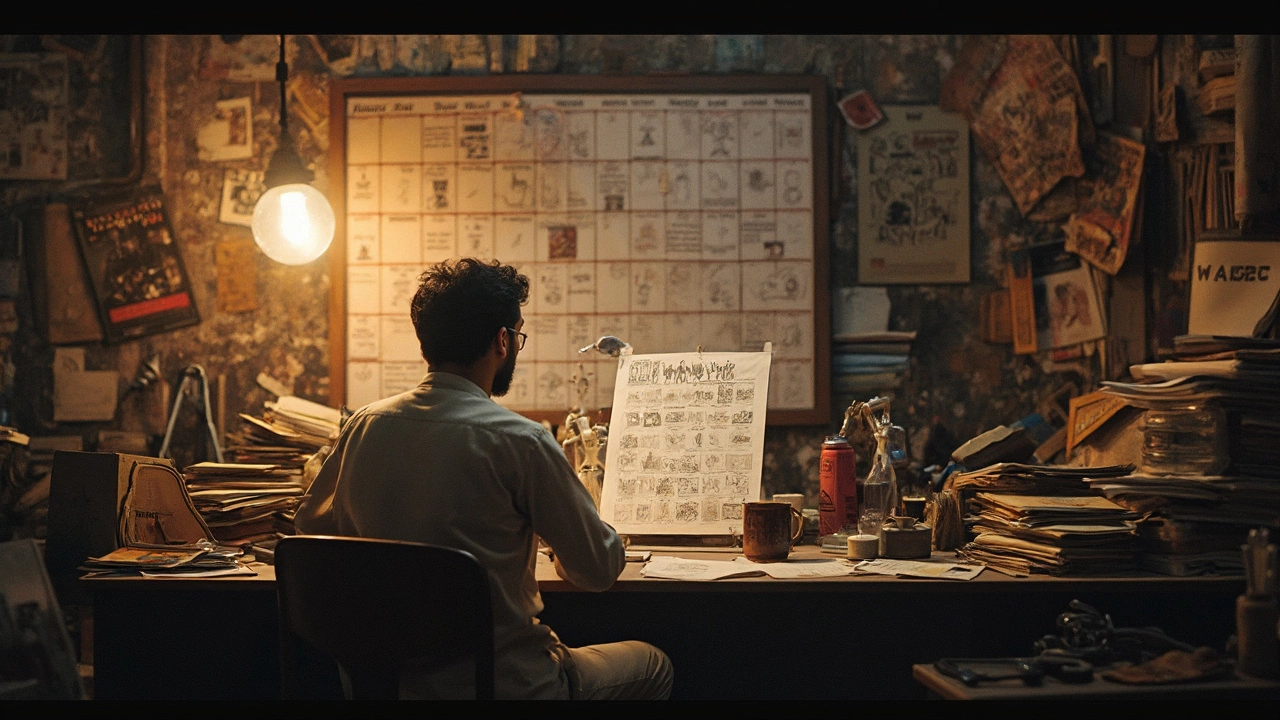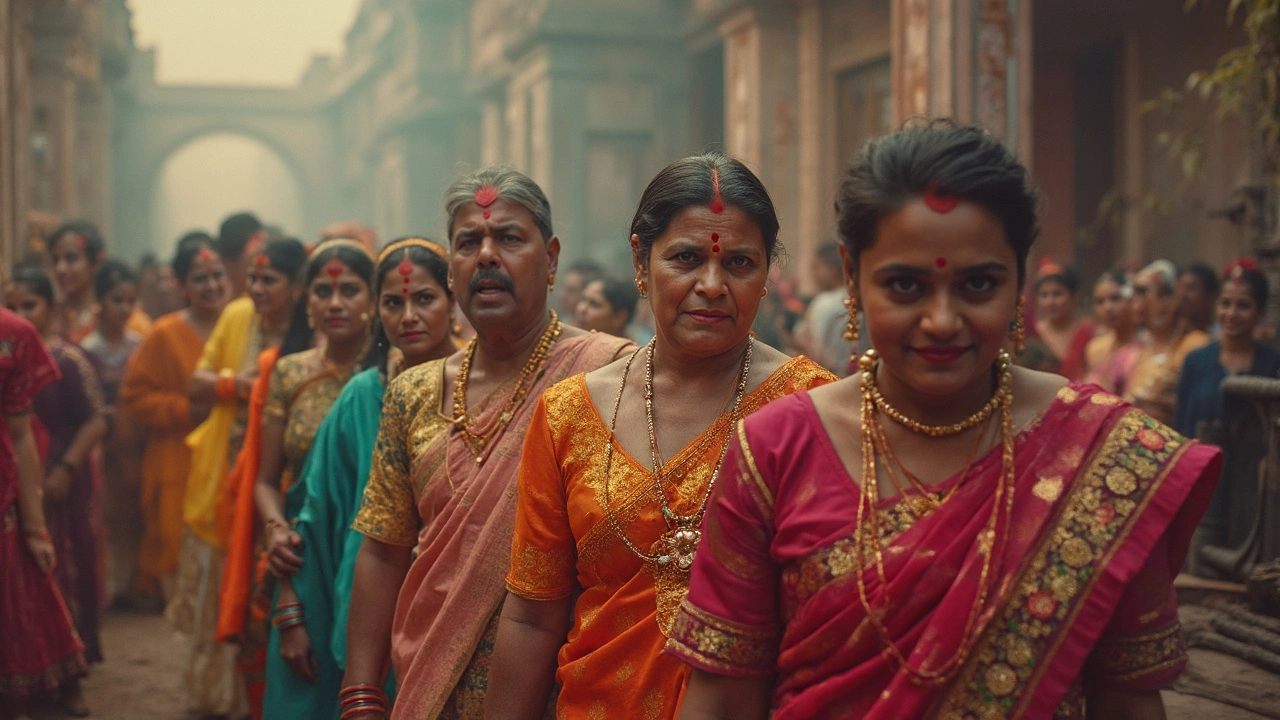Indian Movie That Took 12 Years: The Story Behind the Epic Project
 Jun, 20 2025
Jun, 20 2025
Most people can barely keep up with the usual wait for their favorite movie to release. Now imagine waiting 12 years for one film. Sounds unreal, right? But that's exactly what happened with 'Barah X Barah,' a Hindi movie shot over a jaw-dropping 12-year stretch. No, we're not talking about a lost project dug out from the archives—this was planned and made bit by bit, year after year.
Long productions can sound exhausting, but there's usually more to it. There's a story, not just behind the camera, but behind the dozens of delays, changes, and relentless hard work. Ever wonder what keeps a director glued to one project for over a decade? Was it the story they wanted to tell, money issues, or just pure stubborn passion?
If you’re a movie buff or just someone who likes behind-the-scenes drama, figuring out how a film can stretch out for so long is a gold mine. Knowing why and how it happened will help you spot other slow-burning gems. Plus, you'll get what all the fuss is about when 'Barah X Barah' finally lands in theaters. There’s something kind of thrilling about seeing real-life patience play out on screen.
- The 12-Year Journey: Which Film Is It?
- Why Did It Take So Long?
- The Cast, Crew, and Creative Challenges
- What This Means for Indian Cinema
The 12-Year Journey: Which Film Is It?
When people throw around stories about movie shoots dragging on, they usually mean a few years tops. But in the case of Indian movies, 'Barah X Barah' has set a whole new record, wrapped up only in 2023 after starting all the way back in 2011. That's more than just a long timeline; that's a straight-up marathon. What makes it wild is that this was always supposed to be a slow-burn—almost a documentary approach to storytelling with the same cast aging naturally with the film.
Directed by Gaurav Madan, 'Barah X Barah' isn’t a big-budget action spectacle or fantasy saga. It’s a grounded film about a man who photographs the dead on the ghats of Varanasi. The makers wanted authenticity over shortcuts. Madan and his team filmed scenes every year as the cast and setting changed, letting the story evolve right alongside real life. Most films try to fake time jumps with makeup and effects, but here, time literally did the hard work.
An article in The Hindu summed up the journey neatly:
"We wanted the characters to grow and age naturally, so filming over 12 years wasn’t a stunt—it was necessary for the vision," says director Gaurav Madan.
This movie isn’t just about patience; it smashes norms in Indian movie making. To put it in perspective, here's a quick look at other famous long productions in Indian cinema compared to 'Barah X Barah':
| Movie | Years to Make | Reason for Delay |
|---|---|---|
| Barah X Barah | 12 | Intentional, to track real aging |
| Jagga Jasoos | 4 | Script changes, schedules |
| Pakeezah | 16 | Cast/crew issues, deaths |
What stands out here is the reason: not money, not disasters, but just wanting to capture life as it happens. That gives 'Barah X Barah' a spot in history, not just as a long project, but as a game-changer in how stories get told. If you're the type who loves films to reflect real life, this one’s going to stick with you.
Why Did It Take So Long?
The phrase '12 years in the making' sounds insane for a movie, but 'Barah X Barah' lived it for real. There wasn’t one big headline problem—the delays stacked up for a bunch of reasons, and each year brought something new to slow down the shoot. Let's break down why it actually took so long.
- Indian movies with tiny budgets are at the mercy of money. 'Barah X Barah' started and paused more than once because finances dried up. Production stalled while the team scrambled for fresh funds.
- The director, Gaurav Madan, was obsessed with authenticity. He wanted real Varanasi, changing seasons, and his actors to actually age with the story. That meant shooting only at certain times and often coming back after long gaps to get the right look or mood.
- The COVID-19 pandemic hit right in the later stages. As with pretty much everything else, film crews couldn’t work, city travel was off-limits, and public places (hello, Varanasi ghats) were closed. That skipped months off the schedule—twice, actually, due to India’s repeated lockdowns.
- Key team members kept changing due to other work, illness, or normal life stuff. This isn’t your usual big-budget flick where everyone signs a massive contract for a year. If someone got a different movie or had family stuff, the shoot had to wait.
You can see how it adds up. Check out this breakdown:
| Reason | Impact on Timeline |
|---|---|
| Budget problems | Frequent delays, months lost finding money |
| Authenticity demands | Shooting over changing seasons, real-time aging = years added |
| Pandemic | Full work stops, especially 2020-2021 |
| Team changes | Pause production until people returned |
If you ever think a series or movie takes too long to hit the screen, just remember the wild roller-coaster of 'Barah X Barah.' Long-term projects in India can be a mix of passion, pain, and patience.

The Cast, Crew, and Creative Challenges
Making a film over 12 years is way harder than it sounds, especially in the Indian film world, where things can change overnight. 'Barah X Barah' stuck it out with Gaurav Madan as director, and he deserves major credit for gutting it out, year after year. It’s not like he had a Marvel-sized budget behind him. This film was held together by sheer persistence and belief in the story.
The lead role went to Gyanendra Tripathi, who’s not exactly a household name, but he brought a ton of heart and patience to the set—seriously, imagine aging on screen for over a decade. The supporting cast included veterans like Bhumika Dube and Harish Khanna, both of whom had to fit this project into their other work and personal lives, sometimes dropping everything at the last minute for sudden shoots.
The crew faced more hurdles than most people would handle. Changing equipment, switching out crew members, getting permits renewed every couple of years—these are the boring, but crippling, things that can stop a film in its tracks. They even had to reshoot scenes when actors looked too different because of the time gaps. There were budget hiccups, and more than once the project nearly went cold before someone stepped up with more funding.
Here’s a quick look at some real challenges they tackled:
- Scheduling chaos: Actors and crew moved on to other jobs, so matching calendars was like solving a puzzle every year.
- Continuity headaches: Keeping everyone looking the same and making sure props and sets didn't age more than they should. Even small things like a street sign changing in the background could wreck a scene.
- Budget problems: Funds didn’t flow smoothly; sometimes shooting had to be suspended until more money could be raised.
- Changing tech: Cameras and editing tools improved a lot over 12 years, but they had to keep the look consistent.
To give you a sense of just what the team was dealing with, check out this table showing the main cast and crew, and how their roles or schedules changed over time:
| Name | Role | Involvement (Years) | Notable Challenges |
|---|---|---|---|
| Gaurav Madan | Director | 2012-2024 | Maintaining vision, finding funding |
| Gyanendra Tripathi | Lead Actor | 2012-2024 | Consistent acting over time, physical appearance changes |
| Bhumika Dube | Supporting Actor | 2013-2024 | Schedule conflicts, character continuity |
| Harish Khanna | Supporting Actor | 2014-2024 | Balancing other projects, return for reshoots |
| Sudhir Palsane | Cinematographer | 2012-2024 | Adapting to new camera tech |
Filmmaking is brutal on the best of days, but sticking with an Indian movie for more than a decade? That’s next level. The whole team behind 'Barah X Barah' pulled off something wild—you don’t see this kind of dedication every day.
What This Means for Indian Cinema
So, why does a single film taking 12 years to make matter to Indian movies in general? Honestly, it’s a big deal—because it goes way beyond just one director being stubborn. For starters, most Indian movies are shot in less than a year. Blockbusters sometimes wrap up in just a few months. To see something like 'Barah X Barah' spend over a decade in production is pretty wild.
This proves filmmakers in India aren't always racing against deadlines. Sometimes, they’re chasing quality, authenticity, or just a dream. And with today’s Indian box office stacked with big commercial titles, patience for a slow, personal project is rare.
Take a look at some numbers to see what the norm looks like versus one extreme:
| Film Title | Production Time (Years) | Type of Project |
|---|---|---|
| Barah X Barah | 12 | Art House |
| RRR | 3 | Mass Blockbuster |
| Lagaan | 3 | Epic Sports |
| Article 15 | 1 | Social Drama |
Notice that almost every other big movie in the list took about three years, max. Only a handful of international films like 'Boyhood' (shot over 12 years) have tried something this bold. Indian cinema taking that same leap means more creative risks in the future, bigger breathing room for original stories, and less fear of breaking convention.
For new filmmakers, this sends a loud message: Sometimes, Indian movies can go against the grain and succeed. Nobody's saying you have to wait a decade to make a great film, but seeing someone pull it off can inspire long-term thinking. If you’ve got a project that needs time, this story proves it’s possible—even in a market known for cranking out films quickly.
It might also nudge producers and studios to think twice before pulling the plug on a delayed film. The payoff—critical acclaim, festival buzz, and sometimes box office rewards—can be worth it. If anything, viewers now know there’s more out there than just instant hits. There's patience, there’s passion, and sometimes, the wait brings something honestly unique.